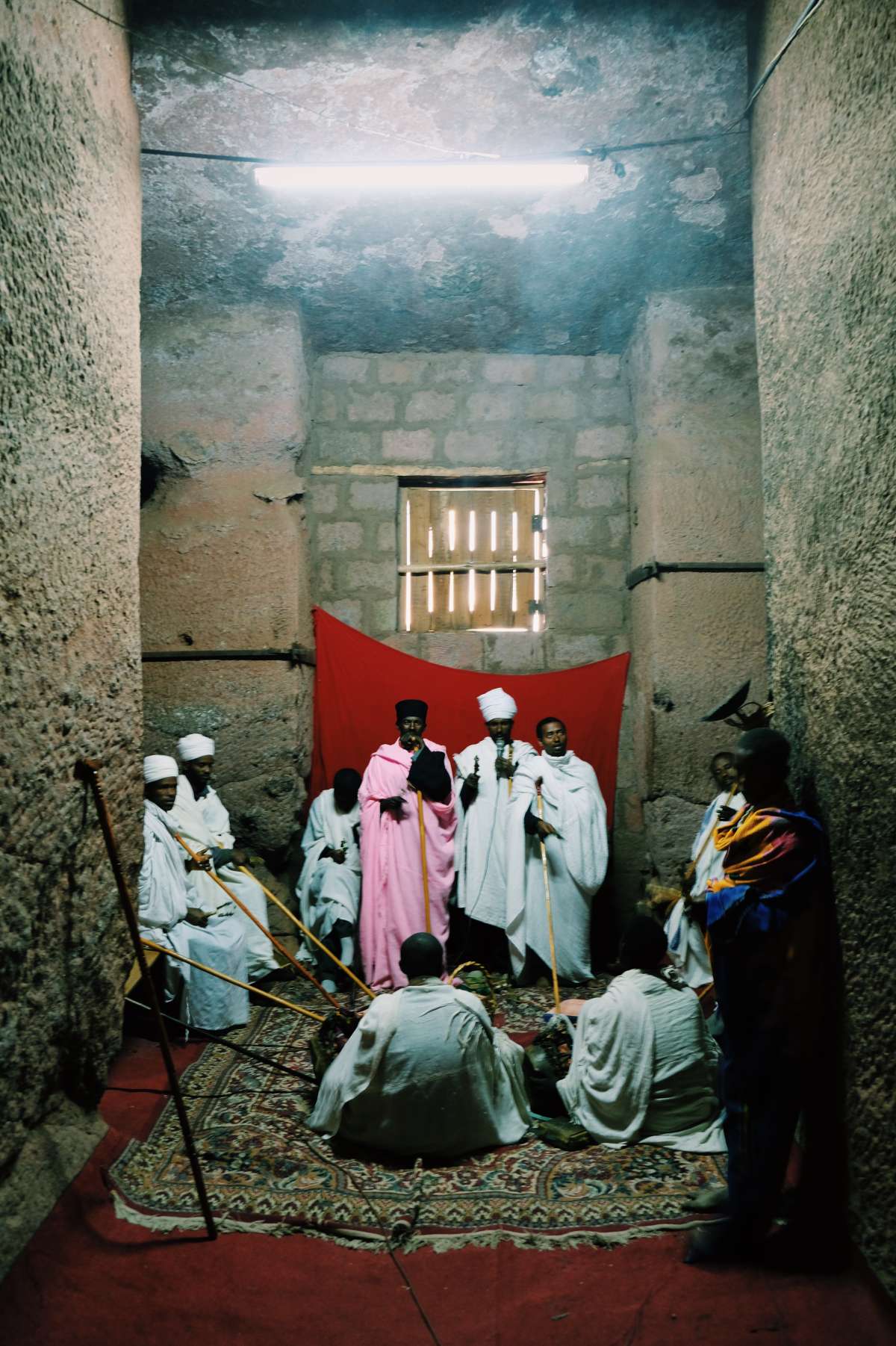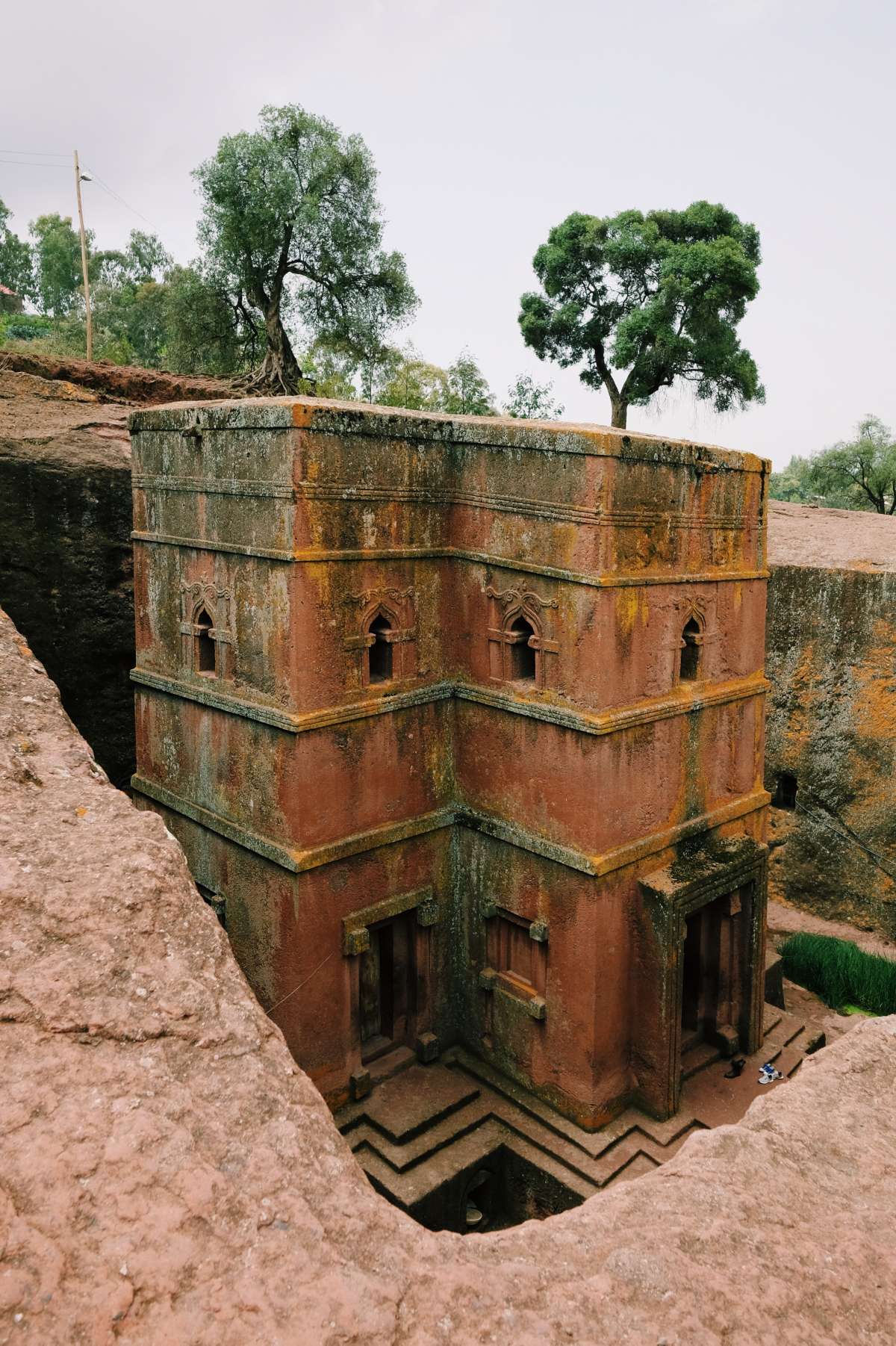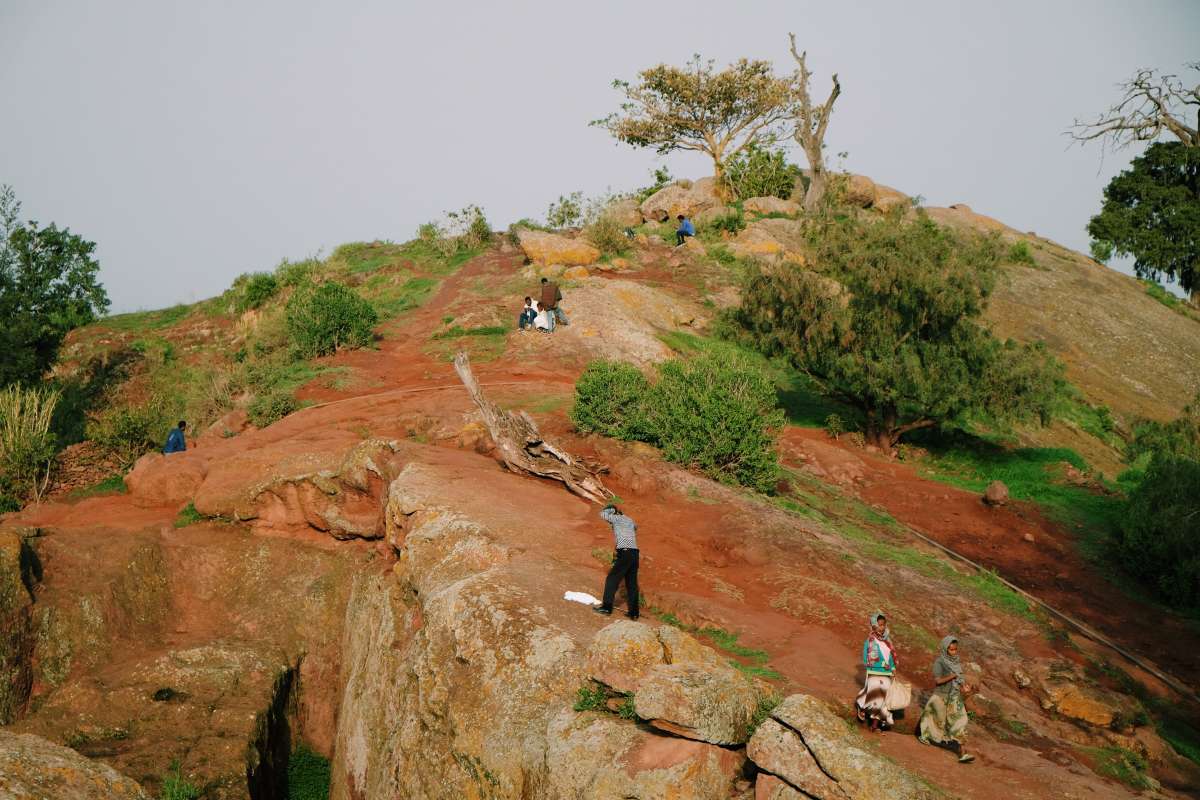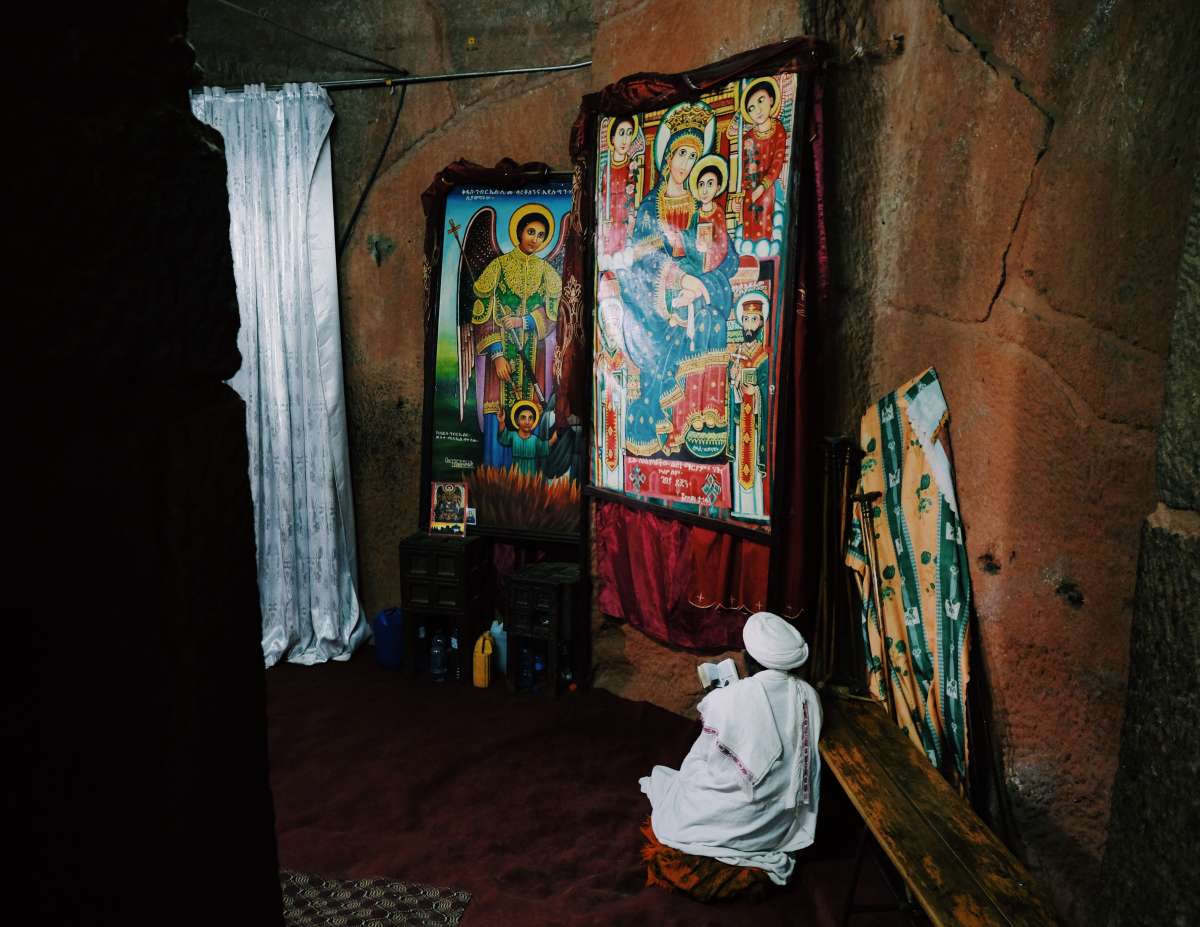Ethiopia, Part 2: Lalibela
These rock-hewn churches are still active shrines
Two Lalibela priests watch over the surroundings of the village.

Sporting a new Zinaff leather jacket, a pair of Bermero suede boots and carrying a shipload of Tomoca coffee in my suitcase, I travel north. From Addis, it’s a 680 km-long journey to the city of Lalibela, known for its impressive monolithic churches. The trip is best accomplished with the one-hour flight. Lalibela has its fair share of nice hotels and homestays, and my pick, Tukul Village, doesn’t disappoint. With rooms overlooking one of the city’s striking rock-hewn churches, it comes highly recommended.
 Several depictions of Mary and Jesus. On the left, you can see the Ethiopian version of the two holy figures: Jesus wears a small afro!
Several depictions of Mary and Jesus. On the left, you can see the Ethiopian version of the two holy figures: Jesus wears a small afro!
At 5 a.m., my guide, Belaynew, is already waiting for me. With my previously bought combi-ticket (US$50 andvalid for five days), we follow the raspy chants of Lalibelan monks on our way uphill. A snaking, hewn-out path eventually leads us to the source of the enchanting singing in Bet Mercurios; the first of 11 rock-cut churches we visit that day.
 A lday sits against the exterior of the Bet Mercurios church
A lday sits against the exterior of the Bet Mercurios church
 Labilela priests and monks sing prayers in one of the rock-cut churches, very early in the morning
Labilela priests and monks sing prayers in one of the rock-cut churches, very early in the morning
Ten Ethiopian orthodox priests and monks – dressed in robes and carrying prayer staffs and long wax candles – are chanting in a small room, lit by one fluorescent light. Young apprentices listen quietly to the monks’ song. We know that the churches were carved from the relatively soft and volcanic, red tuff mountain, but when it comes to why the monolithic churches have been built, and who Lalibela actually was, a lot is still uncertain.
 Lalibela's St. George Church
Lalibela's St. George Church
 One of Lalibela's surrounding hills
One of Lalibela's surrounding hills
One theory is that, as a youth, King Gebre Meskel Lalibela spent some time in Jerusalem, and the conquering of that city by Muslims in 1187 inspired him to build New Jerusalem in Roha (as the town was then called). Belaynew explains that some followers believe Lalibela himself carved the whole complex overnight, assisted by angels. Though the exact dates of the excavations are uncertain, it’s more likely that the first church was cut out in the seventh century, and the last one was formed in the 13th century.
 A priest prays in one of the rock-hewn churches
A priest prays in one of the rock-hewn churches
 A church-goer reads the bible
A church-goer reads the bible
After making it through “Hell” and visiting the other churches (including the most famous one, Bet Giyorgis), Belaynew and I part ways. Later that morning, the monks’ chanting stops, and is replaced by the chatter of visiting tourists. On account of its ancient churches – all still clearly in use as active shrines – Lalibela is an exceptional place to spend time in.
 Lalibela's Ben Abeba Restaurant offers a spectacular view over the hilly regions around Lalibela
Lalibela's Ben Abeba Restaurant offers a spectacular view over the hilly regions around Lalibela
Hoi! My name is Joost Bastmeijer, and I’m a Dutch freelance travel writer and photojournalist currently traveling through Africa. Check out my photos on Instagram at instagram.com/joostbastmeijer, or visit my website to see some more of my work: joostbastmeijer.com!
 A priest walks on paths between the churches
A priest walks on paths between the churches
 Lalibela restaurants are easily reachable, because of the village's many tuk-tuks
Lalibela restaurants are easily reachable, because of the village's many tuk-tuks
To read more about my trip to Ethiopia, make sure to check out my Ethiopia Guide! In part 3 of the guide, you’ll learn more about my trip to Gondar, a small city with medieval castles which you can find in the North of Amhara.
 A priest reads the bible
A priest reads the bible